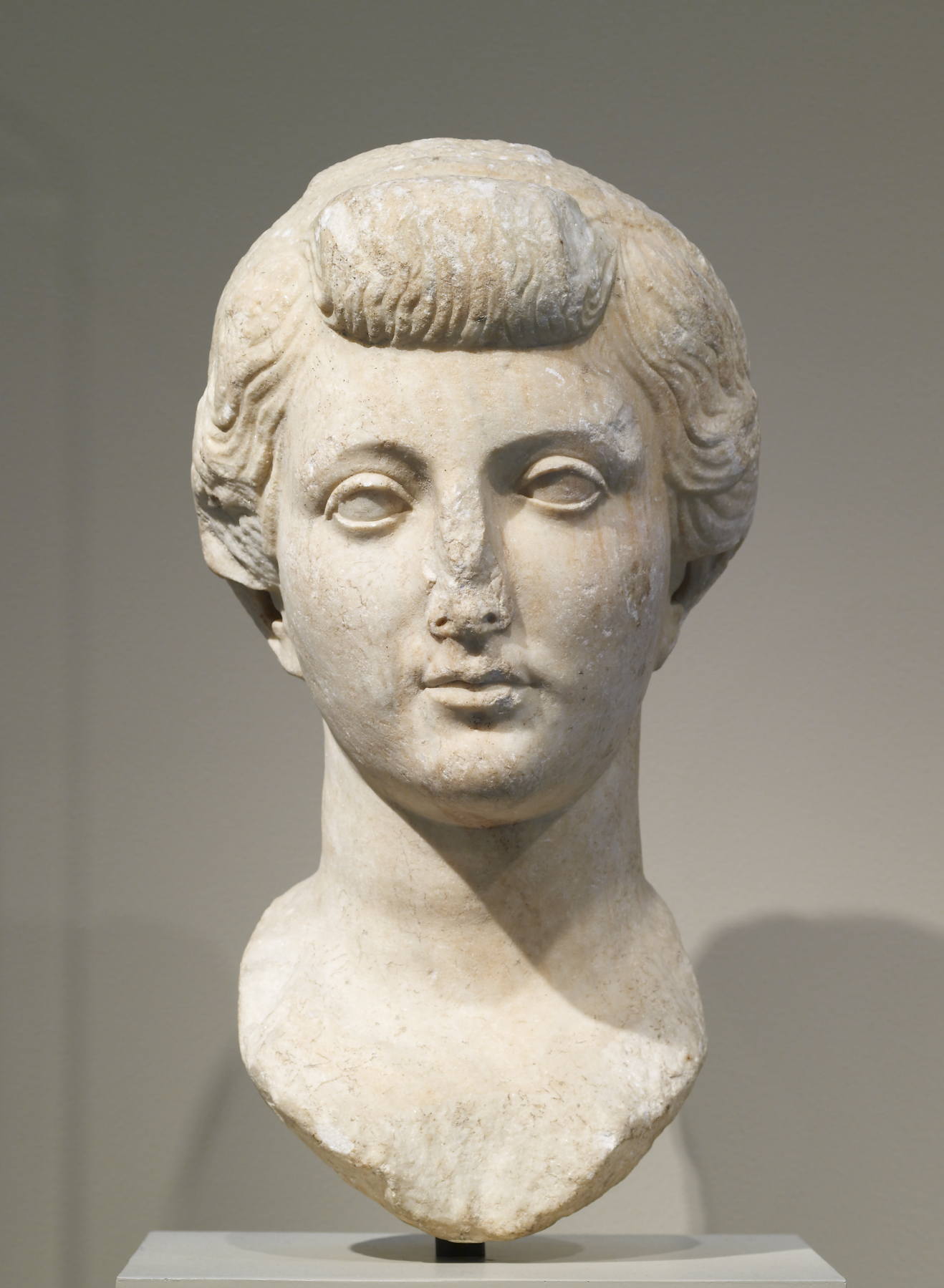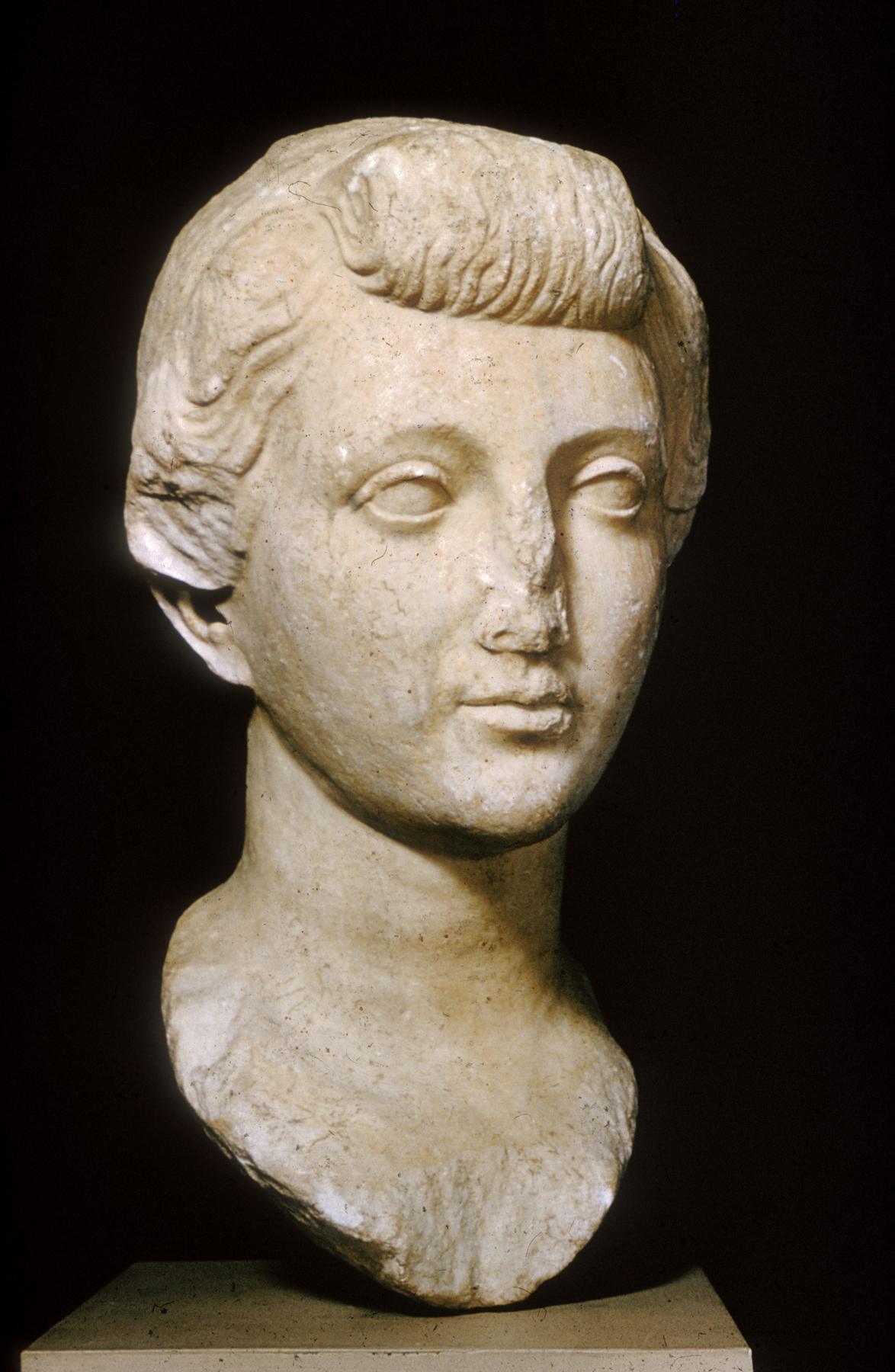Portrait of Livia
(Roman Empire )
This portrait of Livia was created not long after her marriage to Emperor Augustus. As the first empress of Rome, Livia wanted her public image to embody all the virtues that the Romans valued in a woman, including "pudicita" (modesty) and "pietas" (respect). She also set a new fashion with her innovative nodus hairstyle, in which a section of hair is arranged in a roll over the forehead, while the rest of the hair is swept back in loose waves and secured in a bun at the nape of the neck.
Provenance
Provenance (from the French provenir, 'to come from/forth') is the chronology of the ownership, custody, or location of a historical object. Learn more about provenance at the Walters.
E. Zoumpoulakis, Athens, [date and mode of acquisition unknown]; Joseph Brummer, New York and Paris, 1926, by purchase [Brummer inv. no. P2532]; Joseph Brummer Sale, New York, June 9, 1949, no. 472; Walters Art Museum, 1949, by purchase.
Exhibitions
| 1996-1997 | I, Claudia: Women in Ancient Rome. Yale University Art Gallery, New Haven; San Antonio Museum of Art, San Antonio; North Carolina Museum of Art, Raleigh. |
| 1978 | In Search of Ancient Treasure: 40 Years of Collecting. The Walters Art Gallery, Baltimore. |
Conservation
| Date | Description | Narrative |
|---|---|---|
| 3/3/1961 | Treatment | cleaned |
| 6/26/1961 | Treatment | cleaned |
| 7/6/1970 | Treatment | cleaned |
| 1/1/1992 | Technical Report | x-ray diffraction; other |
| 5/4/1994 | Loan Consideration | examined for loan |
| 9/17/2008 | Examination | examined for exhibition |
Geographies
Roman Empire (Place of Origin)
Measurements
18 1/2 x 9 7/16 x 12 3/16 in. (47 x 24 x 31 cm)
Credit Line
Museum purchase, 1949
Location in Museum
Accession Number
In libraries, galleries, museums, and archives, an accession number is a unique identifier assigned to each object in the collection.
In libraries, galleries, museums, and archives, an accession number is a unique identifier assigned to each object in the collection.
23.211




